Decorative plaster is the most common material for wall decoration. This is due to the low cost consumables and exceptional performance.
What is it for? Quality of finishing material
Facade plaster has the following characteristics:
- Protection of walls from the destructive effects of weather conditions (wind, snow, rain). Observing this condition ensures normal air exchange between their internal and external surfaces.
- Suitable for all types of surfaces, including thermal insulation (expanded polystyrene, plastic, foam).
- Post-finishing of walls is varied. Unique color scheme water-based paints allows you to change the color of the building to any color depending on the customer’s preferences). Rollers and shaped spatulas allow you to get a variety of prints on the finishing material.
Plaster is both a construction and finishing material.
Types of plaster
All finishes are divided into several types depending on the main component of the mixture:
Universal plaster Mineral Acrylic Silicate
- Universal consider silicone solutions. This is due to the practicality of the material. It has heat, steam and water permeability. Resistant to mechanical stress. Dust does not settle on such coatings.
- Acrylic the mixture is quite durable. Withstands up to 20 years of maintenance-free operation due to the elasticity of the surface layer. Requires additional preparation of walls (leveling, priming).
- Silicate finishing material allows you to protect the surface of building walls for as long as possible. Excellent for residential and administrative buildings.
- Mineral facade plaster ranks first in the market finishing materials for facades in the CIS. The popularity is due to the low cost of the product and excellent performance.
Characteristics of finishing material bolix
Bolix mpka15dm facade mixture is a mineral decorative putty. Used to cover external walls, the top thin layer up to 2 mm creates a barrier between the surface and environment. Bolix decorative plaster is produced in two colors: white, gray for subsequent painting.
The composition includes cement and sand, which in certain proportions make up a dry mixture. To improve performance, certain components are added to the basic elements.
Properties
- Consumption 2.8 - 3.5 kg/m2,
- Application temperature from 5 to 25 ° C.
- Grain granulation approx. 1.5 mm.,
- Optimal thickness according to grain granulation,
- Bulk Density approx. 1.70 kg/dm 3,
- The proportions of the mixture are 4.30-4.80 liters of water per 25 kg bag.
Advantages this type of finishing material:
- Low cost of raw materials;
- Excellent thermal insulation properties finished surface;
- Minimal preparatory work.
Flaws mineral finish:
- Short service life;
- Labor-intensive construction work;
- Long-term post-processing of facade surfaces.
Stages of finishing work
Before the main block finishing works it is necessary to prepare the surface:
- Level, degrease, sand;
- Putty with primary putty and primer;
- Allow the surface to dry for at least 6 hours.
Preparation of a bolix type solution involves mixing the required amount of water with the dry mixture. Mix with a construction mixer until the solution is uniform in color and consistency. After applying the solution in a thin layer to the surface of the walls, it should be evenly distributed over the base (with a plastic grater).
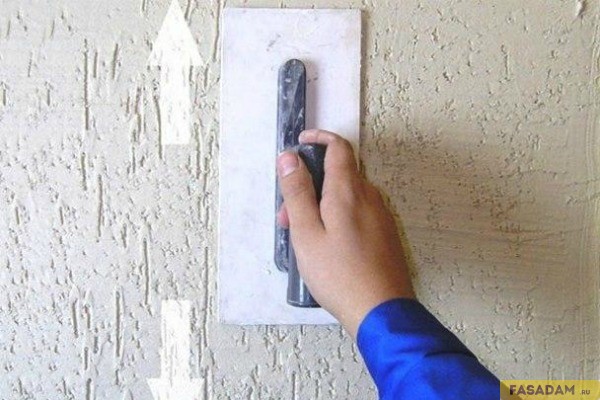
Using an up and down motion, apply the plaster until the same pattern is obtained.
Additional Information
- Also used for finishing interior walls.
- Supplied in 25 kg packs.
- Increases the thermal insulation qualities of facades.
- Ease of preparing the solution.
- The mixture remains elastic for a long time, due to which it is possible to prepare an increased volume of the mixture for work.
- The period between surface preparation and priming is on average 17 days.
- For work performed in several stages, the exact ratio of the mixture and water should be noted, otherwise decorative plaster on different parts of the building will be different from each other.
Facade decorative plaster is one of the simplest and most affordable options for finishing the outer surface of a building or its individual parts. architectural elements. This type finishing coating can give the exterior of the building a stylish, impeccable look for many years to come, since the plaster is not afraid of exposure ultraviolet rays, precipitation and low temperatures.
Our range
Properties of the material and its advantages
Modern facade plaster performs an important aesthetic function. This type of finishing can become the main element of the building’s exterior decor. Choosing a mixture that includes the most common and inexpensive Construction Materials, as well as its rational application (from 300 g per 1 m2 of wall surface) will allow you to spend 3-4 times less money than when using other methods of decoration.
Facade plaster is intended for external use, so the practicality of such finishing should also be high. Plasticizers, disintegrants, fixatives and other substances are added to the mixtures to give them such important qualities as:

- adhesion;
- elasticity;
- strength and resistance to cracking and abrasion;
- protection from moisture, sunlight and temperature changes;
- practicality in care;
- corrosion protection and durability.
Types of decorative plasters
By invoice
The texture of decorative plaster is an exclusively aesthetic characteristic that does not affect either the strength or durability of the material. Using various techniques and devices (rollers, trowels, sponges, graters, etc.), you can give the surface almost any relief, including patterns.

If we consider standard options, then modern decorative mixtures can have the following types of textures.
- "Bark beetle." This variety is one of the most common plasters and is usually available in many color variations. When facing with compounds of this group, the surface acquires a grooved structure, externally reminiscent of the passages left by bark beetles in wood. These mixtures contain filler with a fraction of 1.5 to 3.5 mm. Finer grain plaster is usually used for interior decoration, and with a large one - it is intended for cladding facades. Methods of applying the mixture: horizontal, vertical, circular and cross. If desired, you can make a wavy or any other texture - you have almost unlimited freedom of creativity. Bark beetle facade plaster is most often applied using a plastic trowel, and grouting is done with a roller.
- "Pebble". These mixtures look like stone chips evenly distributed over the surface of the wall. A facade decorated with such plaster takes on a slight roughness and a three-dimensional appearance. Depending on the purpose (internal or external cladding), the grain size in mixtures of this type can range from 1 to 2.5 mm. Pebble decorative plasters are universal: they can be used to create both patterns and multi-color carved designs, shallow bas-reliefs and traditional textures such as “Polka Dots” or “Fur Coat”. Application work is carried out using a plastic trowel, and for the final formation of the surface, you can use almost any tools - from textured rollers and spatulas to hard brushes and palette knives.
- "Mosaic". An independent type of plaster, fundamentally different from the previous ones. A wall decorated with this material looks like a smooth transparent surface interspersed with granules of natural stone chips. The latter is obtained from one or more rocks of hard minerals (lapis lazuli, malachite, marble, etc.). Depending on the particle size, fine- and fine-textured, as well as medium- and coarse-textured mixtures are distinguished. The first are intended for internal use, the second - for external work. Mosaic facade plaster is not only highly durable, but also aesthetically pleasing. Compositions of this group are applied in a single layer using a plastic trowel, and then rubbed with a roller to give the surface a uniform texture.
- "Brickwork". This type of decorative plaster creates an imitation brickwork. In addition to acrylic resins and fillers (quartz and others), a coloring pigment is added to these mixtures, which eliminates the need for subsequent painting. This type of plaster is applied with a spatula or plastic float. Alignment is done using a roller, and the formation of jointed seams is done with any sharp tool.
By composition
Currently, the range of facade decorative plasters is very diverse. To the usual options, new generation mixtures have been added, which not only make application much easier, but also have improved performance characteristics. Using acrylic decorative plasters, for example, you can create a variety of textures, including complex ones. Our catalog contains the following groups of compounds.
- Mineral (cement and cement-lime). Supplied in the form of a dry bulk mixture, packaged in bags. With its help, textures such as “Pebble” and “Bark Beetle” are created. The composition of decorative plaster includes cement, mineral filler of various fractions and special modifiers that give the mixture plasticity and increase the wear resistance of the composition. One of the varieties of cement plaster is polymer-cement plaster, which, in addition to modifiers, cement and mineral fillers, includes polymer binder components.
- Acrylic. Ready-made mixtures are supplied in plastic buckets. They are designed to produce traditional textures up to 4 mm thick, as well as “bark beetle” textures up to 3 mm deep. The binder component in facade decorative plasters of this group is acrylic resin, and the filler is a sandy mineral fraction ranging in size from 1 to 3 mm (depending on the texture). In addition, the mixture contains modifiers, including an emulsifier, which gives acrylic resins the property of water solubility. Acrylic facade plasters are durable and easy to apply. The latter is ensured due to good adhesion to the surface and high plasticity of the mixture.
- Silicate. This group also belongs to the category of ready-made mixtures supplied in closed containers. Silicate facade plasters are distinguished by a wide variety of colors and textures. The main ones are “Pebble”, “Mosaic” and “Bark Beetle” with a layer thickness of no more than 4 mm. The binding component in these mixtures is the silicate component, otherwise called liquid glass. In addition, the material contains modifying additives and mineral fillers with different fraction sizes (from 1 to 3 mm). Silicate decorative plasters are famous for their high water resistance and have greatest number cycles of water exposure.
- Silicone. These plasters are ready-made mixtures, which does not require breeding. With their help, you can create standard textures, the thickness of which does not exceed 4 mm. The binding element is silicone resin, one of the strongest types of rubber. In addition, the mixture contains emulsifiers and modifiers, as well as fillers with a fraction of 1–2.5 mm (for “Mosaic” and “Pebble”) to 2–3 mm (for the “Bark Beetle” texture). Decorative plasters based on silicone resins are among the most durable and durable, they are distinguished by the highest degree of adhesion to the surface, mechanical resistance and immunity to fungi and mold. Due to the plasticity of the material, the formation of small cracks on the hardened surface is eliminated.
The ROGNEDA group of companies offers a wide range of facade decorative plasters that will transform the walls of your home. In the presented collection of finishing materials TM DALI-DECOR® you can choose plaster that imitates the surface of rock, natural stone, coarse sand, brickwork, “work” of the bark beetle, and other compounds.
The masonry walls are gradually destroyed by exposure to moisture and cold. The room becomes cold and damp. Facade plaster for exterior use can preserve the coziness of your home. It is moisture resistant, helps retain heat, and has a good vapor permeability coefficient. Simultaneously created decorative finishing walls, creating the image of a house with your own hands.
Beautiful finishing of a wet facade
Excursions are classified as cultural events. My friend and I traveled to a huge number of construction stores and showrooms for educational and shopping purposes. Vadik decided to do it in his house under construction plaster facade, and even with your own hands. We visited markets where they sell façade plaster from construction brands. Then we visited branded salons:
- Ceresit;
- Bolix;
- Izover;
- Knauf.

All manufacturers had a wide range of façade plaster for external use with various properties, dry and wet. According to the main component - the hardener, they are divided:
- acrylic;
- cement;
- silicate;
- silicone;
- mixed;
- mineral.
Decorative compositions for plastered facades are included in a separate group. They are used instead of paint for wall decoration. What distinguishes them is textured surface and variety of tones.
Based on their application, façade plasters are divided into universal plasters and those applied to specific surfaces. Vadik was interested in facade plaster on foam plastic and for gas silicate blocks. For bricks, it is better to choose Ceresit or Knauf, which has a cement base.
I like Bolars facade plaster. It is universal, suitable for walls made of gas silicate blocks, lays on brick and polystyrene foam, but it is better when a fiberglass mesh is stretched. I use it when doing façade repairs and insulation. She's light as mineral wool and consumption per 1 m 2 is less than that of other solutions, thanks to additional components. Painting is easy, especially if the finish is acrylic.
Ceresit products are well known to builders

Ceresit plaster is produced for facades, cement, with the addition of lime, gypsum and other components. To decorate walls with your own hands, Ceresit produces an acrylic and mineral mixture.
Vadik was interested in which house façade plaster is the most resistant to moisture and whether Ceresit produces it. Silicate is created on the basis of liquid glass and is laid on brick and masonry made of gas silicate blocks, if a mesh is used. It is better to apply it in a thin layer. Ceresit silicate plaster is cheap, but has several disadvantages:
- fragile, breaks on impact;
- does not allow air to pass through, the wall inside is often wet;
- painting is complex, only certain types of paint are suitable;
- high consumption per 1 m2, heavy;
- complex application technology.

Decorative finishing is possible if fiberglass mesh is used. Painting only with special materials, after priming.
Silicone facade plaster Ceresit, like Knauf, is flexible and plastic. By brick and gas silicate blocks Application technology using fiberglass mesh is better than several thin layers when the mesh is not used.
Elastic plaster for facades based on silicone is used as a decorative structural and bark beetle type. Gives an original look to the surface. Wet plaster will simplify interior renovations, turning every meter of plastered walls into a textured pattern. The grid simplifies the technology. It is possible to paint the surface in different colors after the repair has been completed.
Knauf Unterputz plaster – funny name, excellent quality

Knauf-Unterputz UP210 plaster, unique in its qualities, is classified as cement. It contains lime and polymer additives. It fits well on brick, polystyrene foam, surfaces made of gas silicate blocks and any others if fiberglass mesh is used. Consumption per 1 m2 is small, less than 17 kg of dry mixture with a layer thickness of 10 mm. Square meter walls, if you plaster the facades, are cheaper than other mixtures of Knauf and Ceresite with a lower cost.
When I do repairs, I try to convince the client to choose Knauf - Unterputz UP210, especially if there is subsequent painting of the surface. Other types of materials when using mesh give good coverage, leveling technology and consumption differ little. But in the totality of the characteristics of Knauf - Unterputz UP210 is the best facade plaster for aerated concrete and brick.
In addition to unterputz, Knauf produces a large range of mixtures and mesh for cladding, including finishing fiberglass mesh. Knauf cement dry mixture has various uses, depending on the additives.
Material consumption per 1m2 depends on additives and ranges from 8 kg when using Adhesive as a spray 5 mm thick. Sevener goes to 1m 2 from 3.5 kg.
Polish Bolix plant strives to become a leader

Plastering facades begins with the question of which is better and what to choose. The Polish company Bolix claims that the bark beetle facade plaster is Bolix mpka 15dm. Advantages of finishing with their products:
- easy to lay down acrylic facade paint for Bolix plaster;
- a network of cracks does not form during freezing;
- Reusable painting is possible for repairs and color changes;
- used as a structural one;
- consumption per 1 m 2 from 2.8 kg;
- Cement and acrylic plaster can serve as a leveling base;
- Fiberglass mesh is not needed for the strength of the layer.
Bolix wet plaster finishing technology requires leveling the surface, like other types of façade protection. By brick and aerated concrete blocks flexible fiberglass mesh and leveling compound are laid. You can use ceresite. I don’t think about which is better, but use Unterputz with its increased adhesion and perfectly smooth surface. The consumption per meter of wall is approximately the same.
The high price prevents Izover products from becoming popular

The Izover company produces high-quality insulation. Silicone plaster for the facade, Ceresit and Knauf compositions fit well on it. If a synthetic facing mesh or fiberglass mesh is used, then Isover is easily coated with Bolix mixtures and installed under ventilated systems. The consumption of materials for insulating a house per 1m2 is similar to mineral wool.
Isover insulation under plaster gives a load per linear meter of foundation that is lower than different kinds cotton wool. The specific gravity of isover is lower with higher strength. Wall repairs are not required for more than 20 years. The insulation technology is similar to other types of moisture-resistant insulation. The consumption of glue and fasteners per meter is the same.
Bark beetle and other types of decorative finishes

When to do it high-quality repairs facade on long time, decorative facade plaster bark beetle will help out. Acrylic and silicone plaster received its name for having various types of risks, such as a chaotic and directional network of traces of a bark beetle. Its consumption per 1 m2 depends on the thickness of the applied layer and the grain size of the inclusions. Painting is done after priming. Best paint– acrylic. The color changes easily over time. For smooth walls from gas silicate blocks best option for finishing when needed original painting Houses.
Modern facade decorative plasters allow you to solve the problem once - and for many years to come. exterior finishing building. Together with the leveling screed, which you can rarely do without, it, like skin, protects the load-bearing structures from getting wet, solar activity, sub-zero temperatures, and even mechanical influences.
Through the video in this article, as well as its theoretical part, we will tell you which decorative plasters for factory-made facades are present on the domestic finishing materials market today. You will learn how they are characterized, how they differ, what visual effects they are designed for, and what tool they are applied with. In general, indispensable information for those who have to do their own home decoration.
Plaster decor for the facade
In the arsenal of each manufacturer offering decorative facade plasters to consumers, there are at least five types of mixtures, which are distinguished by the binder base. They are supplied in the form of ready-to-use formulations, or in the form of dry mixtures that only need to be diluted with water.
The manufacturer's instructions regulate the time required for the solution to adapt and indicate the timing of setting and final hardening. A person can only acquire necessary tool, and follow these recommendations.
Acrylic compounds
In modern plasters, especially facade plasters, which must be resistant to moisture and other influences, polymer resins are used instead of mineral binders. The characteristics depend on their properties plaster mixture- and, accordingly, their price.
So:
- Relatively inexpensive and the most popular is external decorative plaster based on acrylic copolymers. In principle, acrylic mixtures are universal and are used not only for finishing facades, but also indoors. But when they're meant to be interior works, then can be designed to produce more varied effects.
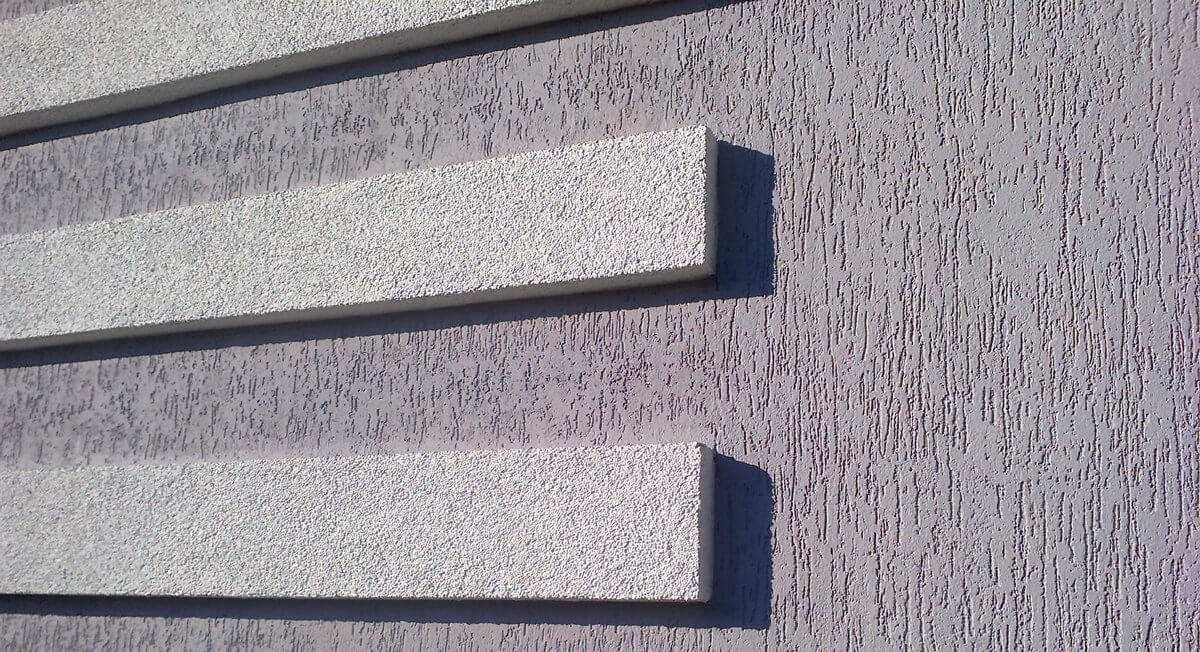
- Facade options are most often divided into structural and mosaic mixtures. When using structural compositions, decorative effect(bark beetle, lamb (see)) is achieved due to a filler of a certain size, which, under the mechanical action of the tool on the screed, moves from place, leaving characteristic marks.
- Structural mixtures are often sold ready-made. Not only do they not need to be diluted with water, but they also do not need to be tinted - just choose the shade you like. If a “bark beetle” type pattern can only be made manually, with a stainless trowel, then plasters with a “croup” effect can also be applied by machine, which is what we see in the photo below.
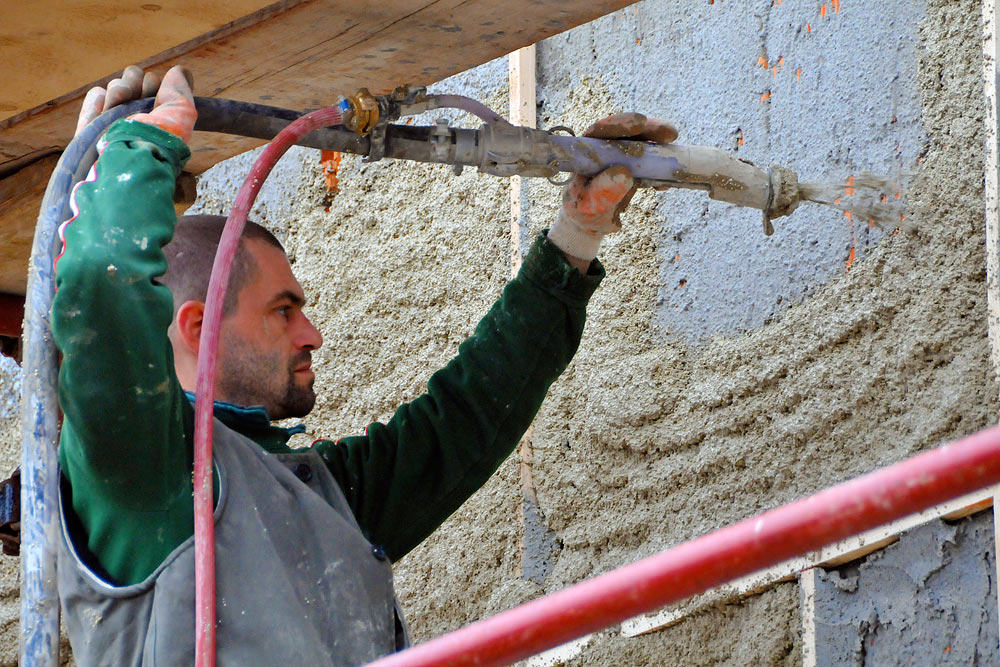
- The effect of mosaic mixtures is also achieved through filler, only here colored marble chips are used, which thickly cover the surface to be finished and are a decoration in itself. It should be noted that of all the materials used for external walls, mosaic coating has the greatest mechanical strength.
Decorative plaster for facades, made on the basis of acrylic resins, is applied to smooth concrete bases or bases leveled with lime-cement mortar. Such compositions are very elastic, easy to apply and adhere well to the surface, retaining the color of the coating for a long time.
Silicone and silicate plasters
Silicone has excellent hydrophobic properties, and decorative facade plaster based on it forms a durable and water-repellent coating. Unlike acrylic compositions, silicone plasters allow steam to pass through well.
They are used not only for finishing mineral substrates (concrete, cement plaster), and are also used in seamless wall insulation systems - that is, plastered over mineral wool and polystyrene.
So:
- The range is somewhat poorer than acrylic ones. There are no mosaic compositions provided here at all - there are only structural ones, for manual application: small and large “grains”, and the same “bark beetle”.
- Due to absolute waterproofness, silicone coatings are self-cleaning., the water simply rolls off them, and after the rain the walls look renewed. This plaster is easy to apply, and in general it combines all the positive qualities of both acrylic and mineral compounds, which will also not go unnoticed by us.
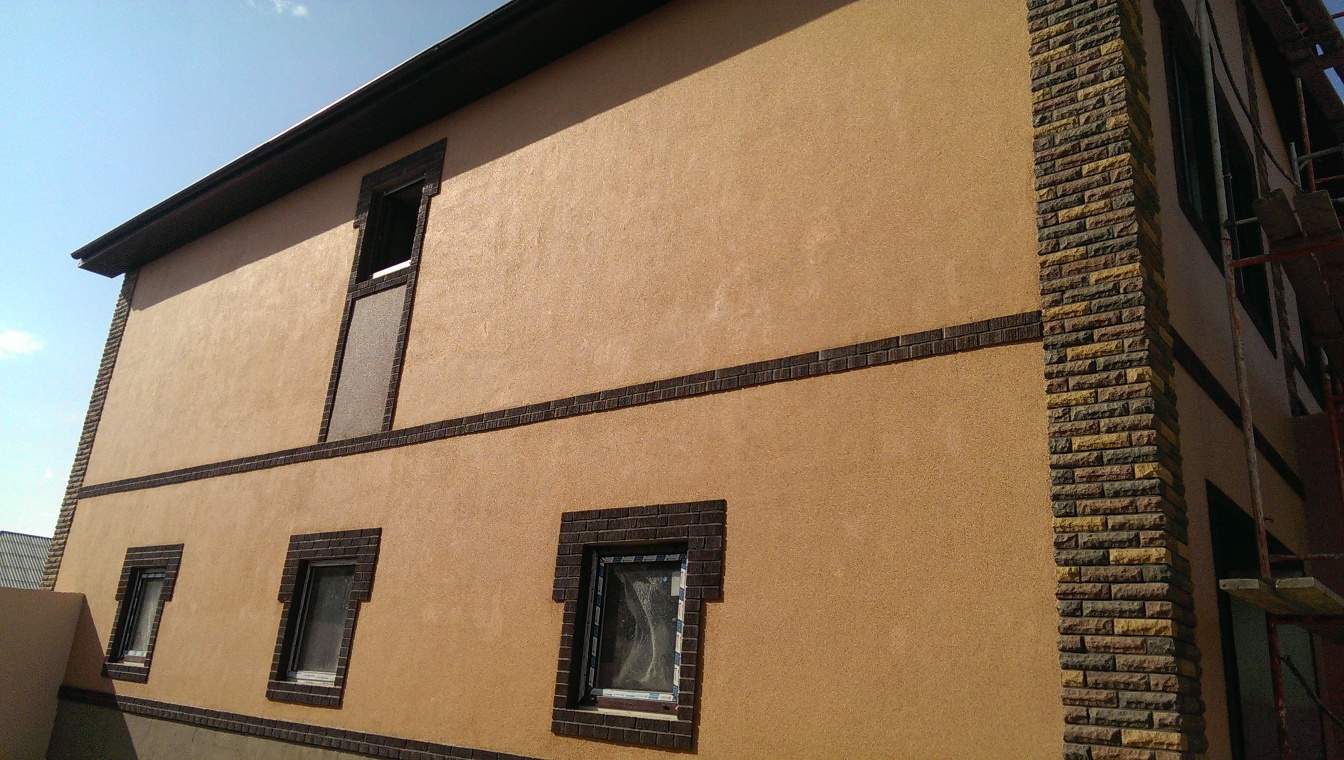
- In the meantime, let's say a few words about silicate plasters, which are also called silicon plasters.. They are based on aqueous solutions of sodium or potassium silicate, which are commonly called liquid glass. The rest is mineral filler, additives that regulate hardening, and pigments.
- This type of plaster is ideal for walls made of gas silicate blocks and sand-lime bricks. But if we take into account that these surfaces are always curved and must be leveled, then a lime-cement plaster screed is usually used as a base.
- Since silicate plasters are characterized by an alkaline reaction, which is not so safe for people working with them, many manufacturers reduce it by introducing silicone resin into the composition. Such plasters are called polysilicate.
They have incredible resistance to aggressive acid rain, ultraviolet, sub-zero temperatures. But we note that compositions with the addition of silicone are somewhat less resistant to biological damage than purely silicate ones, in which the protection is the same alkaline reaction.
Mineral plasters
This type of plaster got its name due to the fact that it does not contain polymer binders, but contains substances of mineral origin: lime and white cement. Not only sand is used as filler, but also granules of marble, mica, sandstone, antarcite, and even ceramic chips.
- If the manufacturer wants to give the material heat-saving properties, then perlite granules and foam glass beads can be used as filler. Such plasters are called warm plasters, and are used not only for finishing facades, but also indoors. They can be applied to any substrate, including those used in warm plaster systems.
- Unlike polymer and silicate compositions, they are produced in dry form and are sealed with water before use. They are not tinted in production, but are offered to the consumer or White color, which can be tinted independently, or grey colour, which is ready for painting. This makes it possible to create multi-color coatings that look very interesting on the facade.
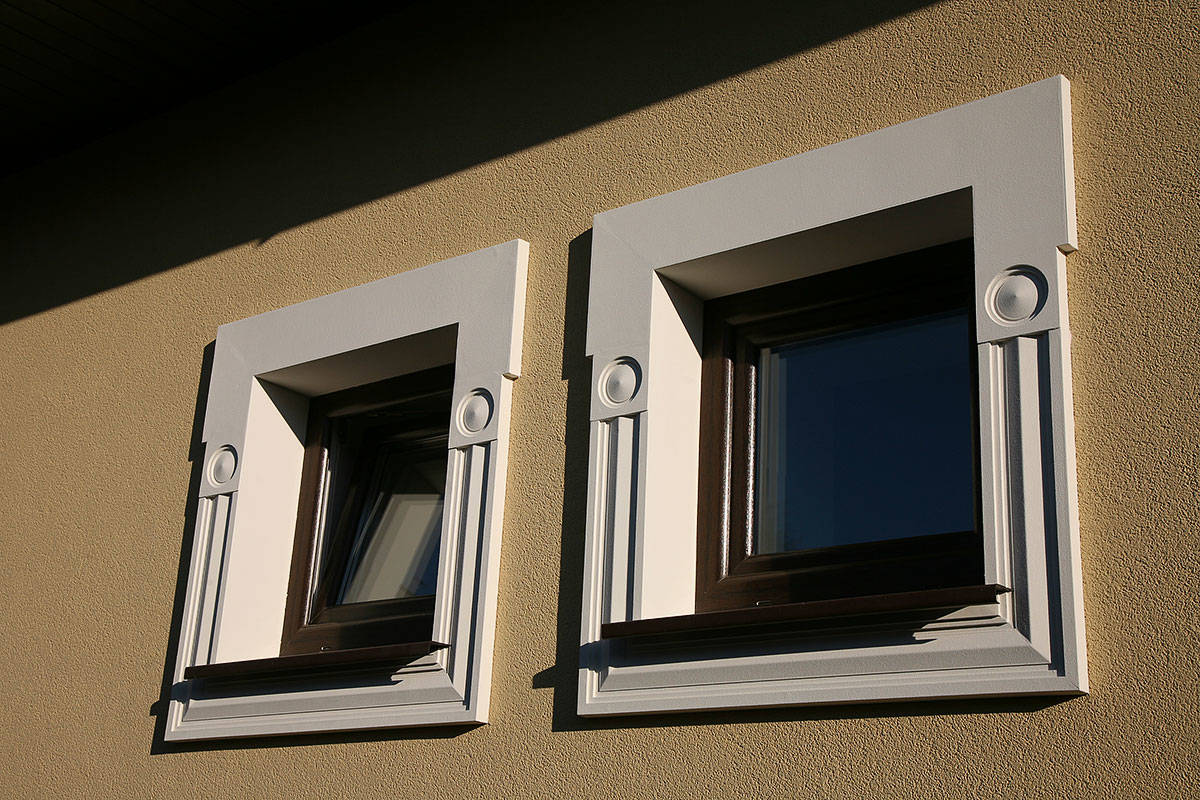
- Let us consider, as an example, what a decorative façade plaster of the bollix mpka 15dm type is. This is a dry mixture, packaged in 25 kg bags. In fact, this is the same structural plaster with the “croup” effect mentioned above, only based on a different binder. The granulation of the filler in it does not exceed one and a half millimeters, the mixture is consumed on average 3 kg/m2.
- The requirements for applying plaster are general: the base, which must be dry, is thoroughly cleaned or leveled, and if required, it is also strengthened with an appropriate composition. The same manufacturer offers both leveling mixtures and adhesive putty, which ensures perfect adhesion, and a primer.
- The solution must be prepared in strict accordance with the recommendations given on the packaging. Mix with a mixer at low speed, let the mixture rest for about ten minutes, and mix again.
Each package must be diluted in the same proportions, and under no circumstances should any foreign additives be introduced into it. When the screed has been processed with a tool until the desired effect is achieved, it is allowed to dry, after which the coating is primed - that is, it is prepared for painting.
No matter how good decorative plaster for a facade is in itself, the quality of the finished coating depends on many other nuances. For example, manufacturers especially note that on bases such as concrete, cement and lime-cement leveling screeds, decorative plastering can be carried out no earlier than a month after their completion.
Note! When working with decorative plasters, certain conditions must be met. Work must be carried out in dry and windless weather, avoiding direct sunlight. Ideal temperature air - from +5 to +25 degrees, since lower temperatures slow down the setting and hardening of the screed.
So:
- As part of the surface preparation, it should be treated with a primer based on the same substance as the plaster. Moreover, the primers offered by the manufacturer are tinted in the same shades. Under the mosaic coating, before priming, a special adhesive composition, which is usually purchased complete with the main composition.
- Even when decorative plaster for facades is ready for use, after opening the package it must be mixed at low speed with a mixer. This is necessary to saturate the mass with oxygen - and besides, you need to get a homogeneous consistency, and the filler settles to the bottom.
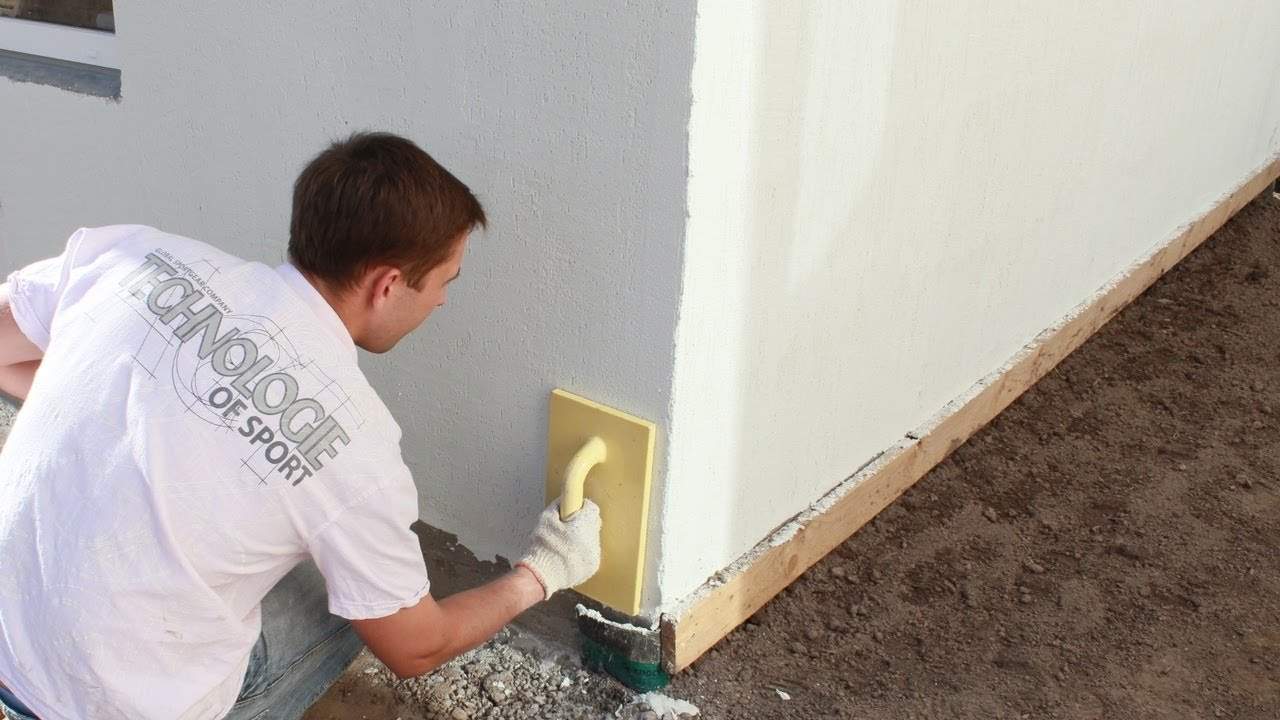
- These tools are used when working with structural plaster. Apply the mass with a long spatula, apply and level with a Venetian trowel - both tools are made of stainless steel. Grouting to obtain a pattern is done with a plastic float. Mosaic coverings are done in the same way, and only by hand.
As for structural mixtures intended for machine application, they should have a slightly thinner consistency and should be diluted slightly with water. It is added no more than 300 ml per 30 kg of plaster mass. Apply the solution in one or two layers using a nozzle in accordance with the size of the filler.
"Fur coat" façade
A beautiful relief on plaster can be achieved not only due to the coarseness of the filler, but also due to excellent command of the tool. We are talking about such a popular covering for facades, which is called a fur coat. This effect can be achieved even using ordinary cement mortar - only in this case the coat will turn out gray, the color of cement.
- If you use ready-made mineral or acrylic structural plaster with a “croup” effect for this purpose, the fur coat will turn out to be colored. In this case, the relief on the coating may differ slightly, which depends on the type and fraction of the filler - the larger it is, the more voluminous the pattern will be.
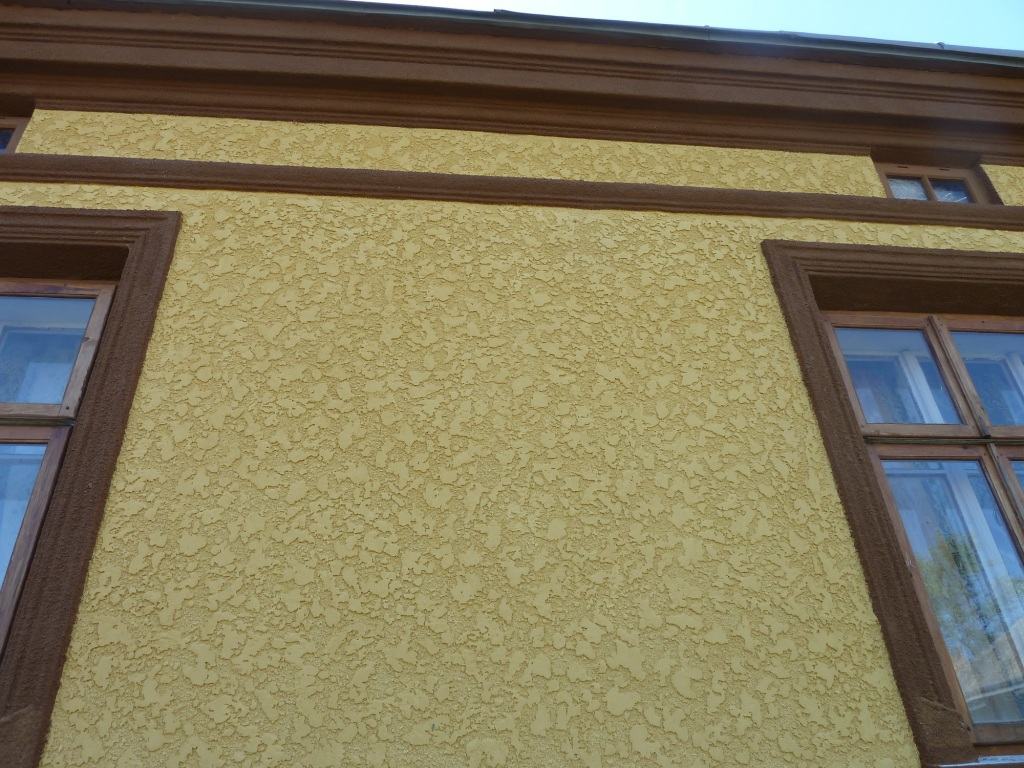
- The type of filler affects not only final result, but also on the cost of the material. It is clear that marble is more expensive than sandstone or mica, which is why plasters with marble chips cost an order of magnitude more. To get the effect of a fur coat, two layers are applied to the surface. The first one, as it should be, is smoothed out well, and, without waiting for it to set, small tubercles of the solution are randomly applied.
- When it dries, the coating is lightly sanded, dust is removed, and painted or coated with a protective compound. If you lightly press down the uncured tubercles of plaster with a trowel, you will get the effect that is shown in the example above - it is called a grated fur coat, and resembles the surface of astrakhan fur.
- Purchased decorative plaster is not cheap. If you make a gray fur coat from an ordinary one cement mortar, it turns out much more economical. It is not as plastic as the compositions from the manufacturer, and it is applied in a completely different way: a solution that is more liquid in consistency is sprayed onto the wall through a frame with a stretched mesh.
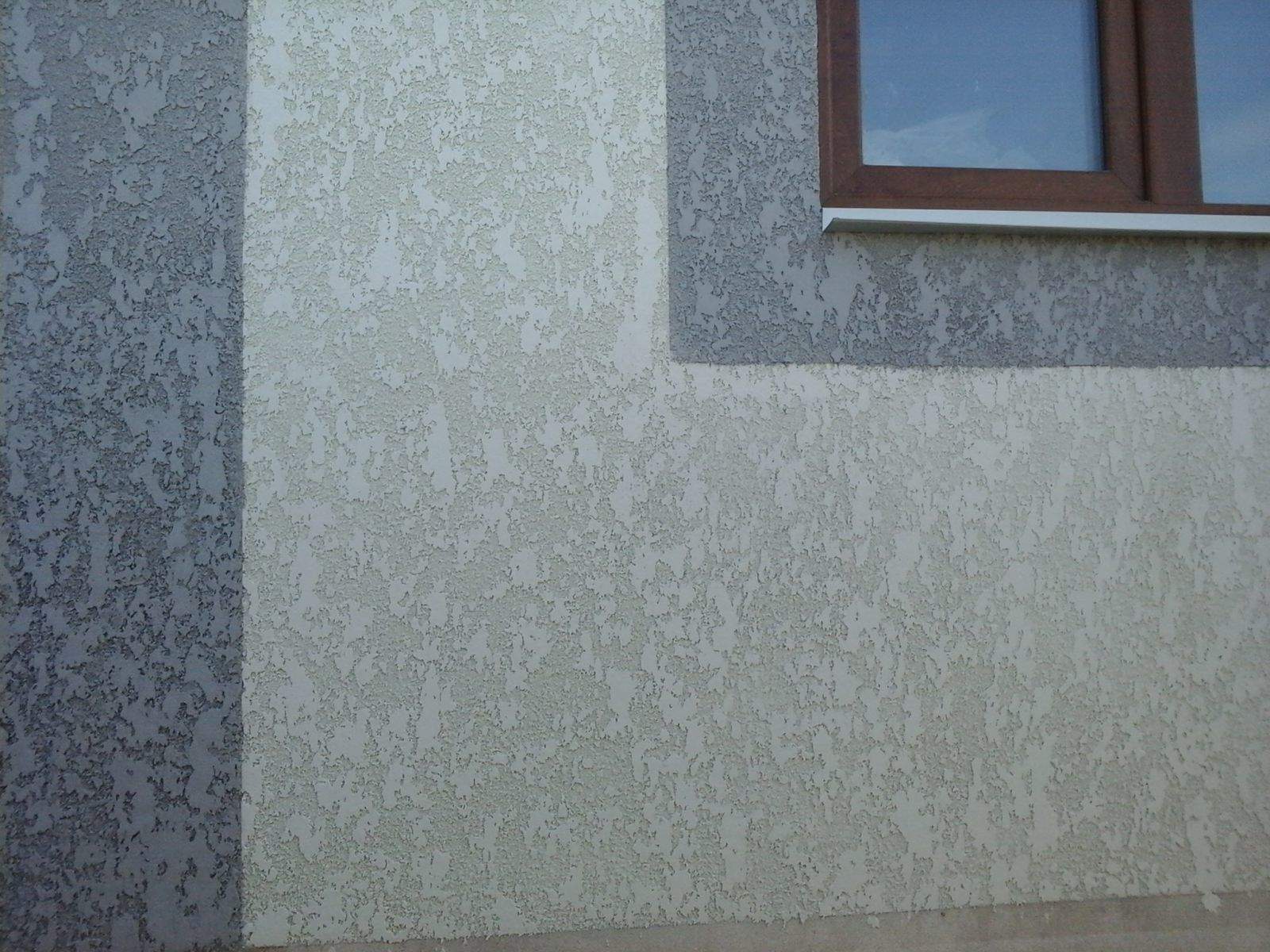
- The larger its cells, the more voluminous the bumps on the plaster are formed. An excellent relief is also obtained when applying the solution using a hopper. In fact, a fur coat is just one of many relief options that can be made using a tool, or even improvised objects.
- This effect is the only one that can be achieved with simple plaster made with gray cement. The problem is that it is neither tinted nor painted properly - no matter how hard you try, the gray color will still show through. If desired, you can, of course, make a solution using white cement, plasticize it with lime paste, and color it.
But in reality, it is very difficult to ensure that each batch has the same proportions of ingredients, and the color needs to be measured down to the drop - otherwise the shades will not be identical. So, whatever one may say, if you want to get a beautiful colored coating, you will have to buy ready-made plaster from the manufacturer.
Decorative facade plaster - applied with your own hands - is a fairly young technology that has already gained popularity and is increasingly used in modern construction. Having replaced the monotonous cement-sand mixture, a decorative analogue makes it possible to diversify appearance building, decorating it with almost any color scheme and texture of your choice.
Unlike the traditional analogue, decorative facade plasters place a special emphasis on appearance - there is a huge number color solutions, which make it possible to bring to life any, even the most daring idea. There are various types of decorative plaster for facades, but the most commonly used name is the “bark beetle” mixture, which will be discussed below.
In addition to extensive color range The bark beetle mixture also provides a unique opportunity to diversify the texture of the coating using an abrasive filler. The presence of a suspension of insoluble filler allows you to give the wall surface a variety of patterns - rain, lamb, etc. depending on your preference. You just need to properly treat the plastered surface and the design you want will decorate your walls for a long time.
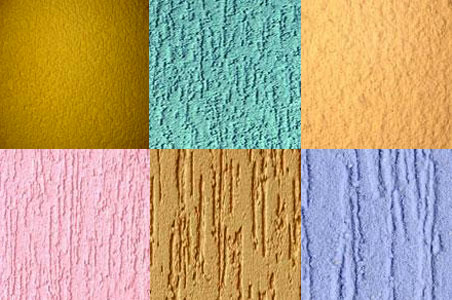
Like putty finishing, decorative plaster is applied to the facade in a thin layer, but it compares favorably with its lighter counterparts - it is a durable, impact-resistant and moisture-resistant material. With its help, you can decorate the facade of a building without sacrificing the durability of the coating.
Also, unlike other analogues, it is quite possible to apply this type of mixture with your own hands, without prior training or specialized skills. Thus, the cost of decorative plaster of a facade can be reduced almost by half - according to statistics, the price of professional services is about 40% of the funds spent on purchasing the material.
This article will provide you with step-by-step instruction about how to decorate a façade with your own hands. With its help, you can carry out this process completely independently without the participation of specialists.
Decorative plaster
Preparing the walls
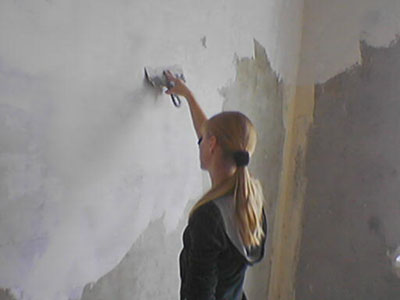
Since decorative plaster creates only a visual effect, it is not possible to use it to level walls. It cannot be applied to a bare brick/block wall, since the maximum layer of this type of plaster can be no greater than the thickness of the abrasive fraction through which the pattern will be formed.
If you neglect this rule, then in the end you will end up with an ordinary flat surface - you will not be able to have any influence on the texture.
A preliminary surface is used as a basis - the maximum permissible gap per meter of measured area should not be more than 2 mm. If the wall was covered with lime whitewash or putty, then the old coating must be completely removed or the surface must be impregnated with a strengthening compound. Any unevenness in thickness formed during the process should not exceed the abrasive fraction.
Note! The primer can only be applied to a completely dry surface - if the rough plaster has not given final shrinkage, this can lead to swelling, discoloration and other undesirable consequences.
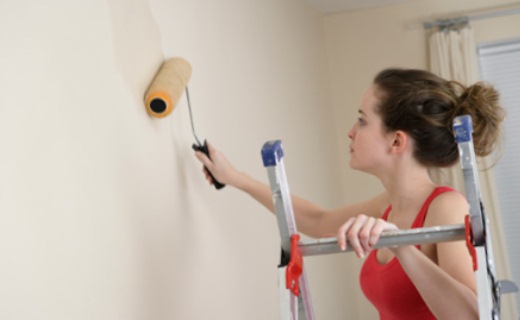
A colored primer is applied to a completely leveled surface - since decorative plaster of this type contains voids, the base will inevitably show through the finish. The tone of the primer material is selected based on the chosen design - it can either merge with the plaster or contrast with it.
In addition to color matching, the primer also enhances the adhesion (degree of sticking) of the surface, making it more receptive to the application of the plaster mixture.
It is advisable to purchase primer and plaster from the same manufacturer - this will give you a guarantee of complete compatibility of the components and will allow you to avoid unexpected consequences. The period of complete polymerization of most primer compositions is about 6 - 8 hours (depending on the manufacturer) - applying plaster ahead of schedule is strictly not recommended.
Applying plaster
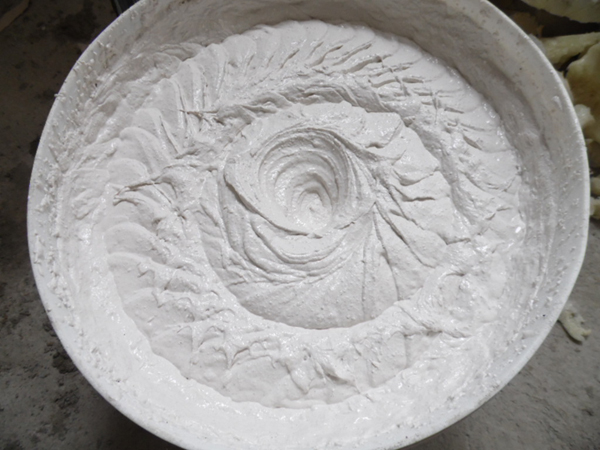
Decorative plaster for facade works applied using spatulas - large/medium and small. You will also need it to structure the surface. It is best to stir the solution using a hammer drill or a hammer drill with a mixer attachment.
The application process itself looks like this:
- The plaster solution is brought into proper condition - if you purchased a dry mixture, you must dilute it with clean water in accordance with the recommendation on the package. If the plaster is supplied ready-made, then if necessary (the mixture is too thick), water can be added to it, but not more than 1% of the total mass of the material;
- Knead too much a large number of the solution is undesirable - the polymerization time of the composition is about 20 minutes, during this period you should have time to apply and rub the plastered area. Prepare exactly as much mixture as you can produce during this time; if the solution remains on the wall for too long, you will not be able to give the surface the required shape, and the remains will simply harden in the bucket;
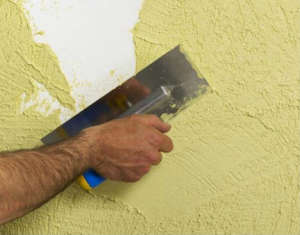
- Decorative plaster on the facade of the house is applied using two spatulas - the large one is applied directly to the wall, and the small one is used to remove excess and carry out other auxiliary operations;
- The mixture is applied to the wall using continuous strokes - the thickness of the layer is determined by the size of the fraction pebbles, which on the one hand should be in contact with the surface of the wall, and on the other act as a limiter for the spatula. By applying slight pressure on the spatula, you will feel the presence of fractions - this is the required thickness of the applied layer;
Note! The spatula has a working position - when viewed from the tip, it has the shape of a crescent. The solution should be smeared outside bending, then when applying you will not have indentations along the edges of the stroke.

- In the end, you should have a smooth plastered area with a small amount of scratches - you can start grouting. To do this, use a polystyrene foam grater, which must first be soaked in water. At this stage, a pattern is formed on the plaster - the resulting pattern will depend on the movements you rub;
- Vertical grout will form a “Rain” pattern, and circular grout will form the so-called “Lamb”. You should not grout one area for too long, as this will create too many voids. The pressure should not be too strong, and the movements should be smooth and measured. If you follow these rules, you will get a correct and symmetrical drawing.
Note! To connect two plastered areas without a visible seam, it is necessary to under-grout the edge of the formed area by 10 cm. You should start grouting it after plastering the next area - this area will hide the seam and make the connection less noticeable.
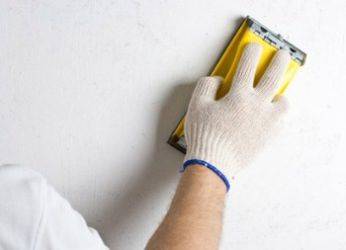
- After the plaster has completely dried, the surface can be painted.
Bottom line
Decorative plaster for the facade makes it possible to completely transform the appearance of the building. Wherein this coating It is devoid of the disadvantages of putty-type coatings - it is a strong, moisture-resistant and durable material. More detailed information You can learn more about this topic by watching the video in this article.
